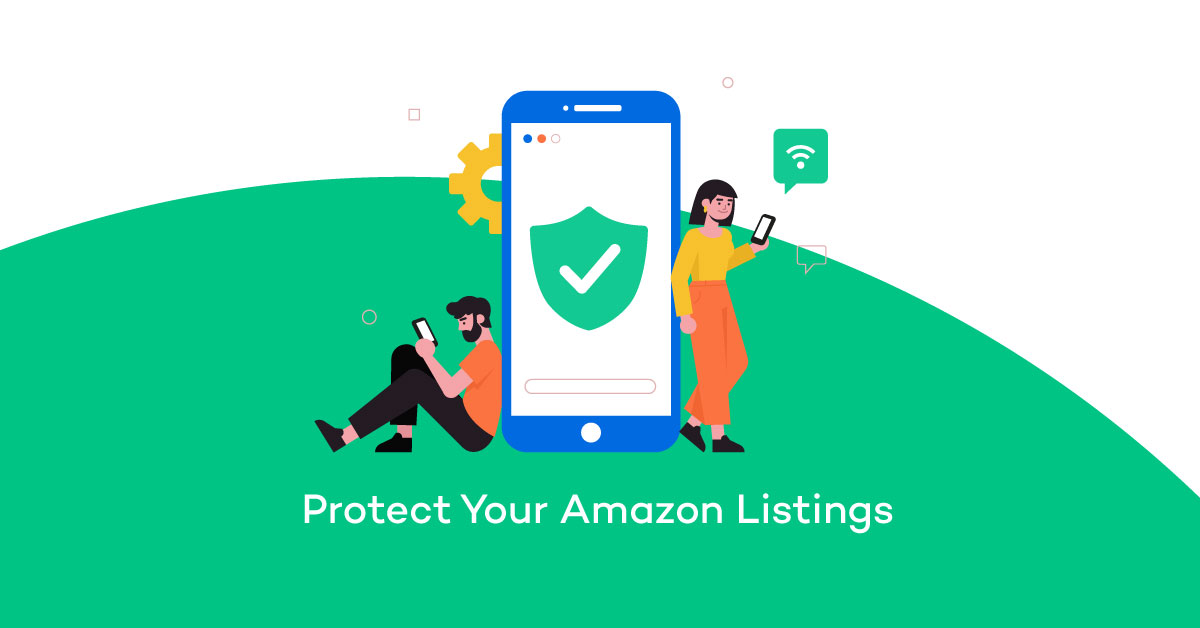So you’ve just spent a lot of time, money, and effort creating the perfect Amazon listing. It’s up, it’s live, and now it’s time to sit back and relax, right? Think again. Regardless of how hard it is to optimize your Amazon listings, that’s just the first step.
In addition to managing sales, you still need to constantly monitor and track your product listings to make sure they don’t get compromised. If you don’t, you may see your listings copied, taken down, or suppressed, with all your hard work benefiting someone else’s bank account. Below, we explain the dangers your listing faces and how you can prevent them.
Threats to Your Amazon Listings
The current state of Amazon is rife with threats: hijacking, sabotage, and search suppression — all on top of staying profitable in the world’s largest and most competitive marketplace! Let’s take a closer look at the risks faced by everyday Amazon sellers.
Hijacking
Amazon listing hijacking is a newer strategy employed by dishonest Amazon sellers, but it’s caught on quickly. The idea is that other sellers steal or counterfeit your products to siphon your customers, but the tactics get more intricate than that.
Amazon hijacking is most common with private-label products. Hijackers notice that your private label product does well, so they track down your supplier and offer the same product under their brand. They typically undercut your price to win Amazon Buy Box for your product, and often, the hijacker’s version is of poorer quality, leading to more bad reviews.
Sabotage
Recently, more Amazon sellers have reported that their innocent listings have been marked as “adult” products. This can be disastrous for sales because adult listings are generally hidden from shopper searches.
Similarly, hijackers may also change your Amazon listings to make them less appealing and/or harder to find. Typically, these listing changes involve the product title, brand name, or other product details that turn shoppers away. Sometimes, they even change your product images, which can lead to both less sales and more product returns.
A sabotage like this is an effective way to drive traffic to the hijackers’ listings instead of yours. It’s essentially a smear campaign that can undermine a reputation years in the making.
Search Suppression
Sometimes, your worst enemy is yourself. Failure to comply with Amazon policies, discontinuing a product without updating the listing, or forgetting to restock an out-of-stock product can all result in the listing’s removal from shopper searches or even getting it marked as “inactive.”
More often than not, search suppression is caused by some oversight of the Amazon seller. Sometimes, they forget a detail in their listing, like setting a product category, or accidentally violate a policy, like using a title that’s too long.
The good news is that these issues are usually easy to fix, but the bad news is that your listing could be suppressed without you even knowing why. For this, it’s crucial to track your Amazon product listings to ensure everything is above board.
How to Monitor Your Amazon Listings
The best way to mitigate all these threats is to catch them early. You need to constantly monitor all your products to spot early warning signs, such as consistently losing a Buy Box (which accounts for more than 80% of Amazon sales) or a sudden dip in ratings. Once you see the signs, you can take action, whether sending a cease-and-desist to a hijacker or simply correcting your own mistakes to make a listing compliant.
For monitoring your listings, you have two options: do it yourself or use protective software.
Monitoring Your Own Listings
Monitoring your own listings makes sense from a fiscal standpoint, but the real drawback is time and effort. You’ll have to essentially check the status, searchability, and product page of all of your products — every day for optimal reaction time or once every few days for more leisurely security.
This works fine for small Amazon sellers with only a handful of products; they will most likely have tighter budgets as well. But for serious Amazon sellers with a lot of products, this could be a massive time drain.
Use Protective Software
The act of checking for changes in listings is a mechanical task, making it perfect for automation software. Third-party Amazon software will monitor your listings in real-time and send you notifications the moment anything suspicious happens. This lets you rectify the situation as soon as possible.
Different software monitors different aspects of your Amazon listings, so find one that does everything instead of relying on multiple software simultaneously. For example, eComEngine’s SellerPulse alerts you for:
- search suppression
- hijacking
- suspicious Buy Box behavior
- status changes
- listing changes (including titles, images, and brand names)
- “adult” category changes
SellerPulse is the complete package for Amazon protection, and it’s more affordable than you might expect, starting at $19/month. Test it yourself by starting a free trial now.
——
About the Author:




